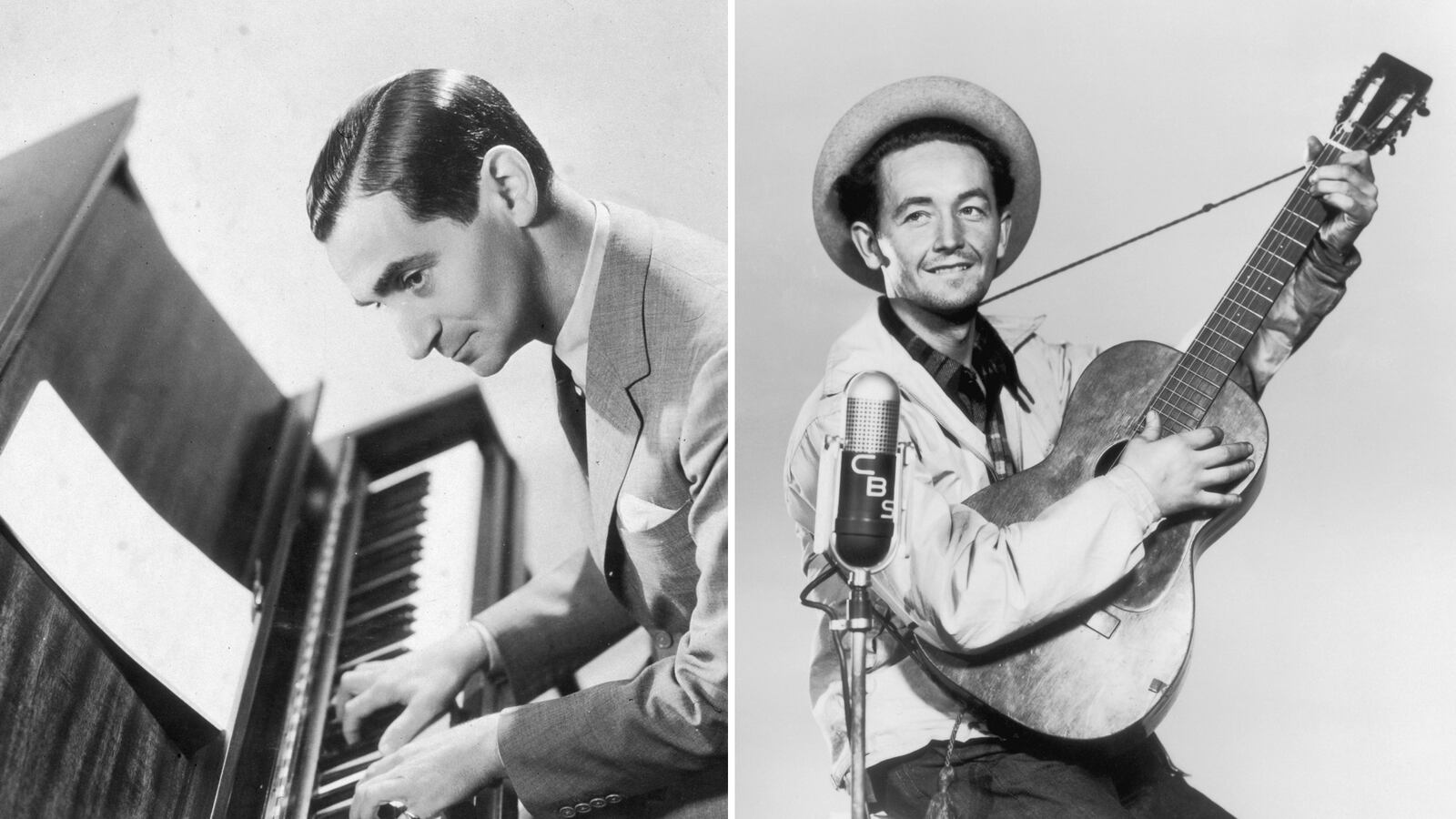In the early winter of 1940, 27-year-old Woody Guthrie made his way from Pampas, Texas, to New York City, ready to break into an arts scene that would be attuned to his left-wing politics. During the long journey, he must have heard Kate Smith’s recording of Irving Berlin’s “God Bless America,” which had been out for just over a year, over and over again; the song irritated him, like a grain of sand working a pearl inside an oyster shell. One February night, in a midtown Manhattan hotel, he began drafting a response. The first lines are instantly familiar—“This land is your land, this land is my land”—but his original final line was much different: “God blessed America for me.”

Songwriter and music critic John Shaw’s This Land That I Love juxtaposes “God Bless America” and “This Land Is Your Land,” the two songs that became the United States’ last truly popular if unofficial national anthems. (Lee Greenwood’s “God Bless the USA” comes close, he concedes, but it doesn’t have quite the same degree of ubiquity—perhaps because it hasn’t been consistently absorbed into the elementary school songbook.) Surfing through Guthrie and Berlin’s biographies, Shaw reveals how the nation’s most famous composer and a struggling folk singer distilled their love for America into music.
Berlin, whose family had fled to America in the 1890s after their home was burned down in the Russian pogroms, had found tremendous success in his adopted homeland but grew increasingly anxious as Hitler rose to power. He was in London on business in September 1938 when British Prime Minister Neville Chamberlain signed the infamous Munich Pact, surrendering the Sudetenland to Germany in exchange for “peace in our time.” Shortly after that, recording star Kate Smith asked him for a song that she could perform on her annual Armistice Day radio broadcast. He turned to a tune he’d first written in 1918 for a wartime musical revue, sprucing it up a bit, including an opening passage that summarized the situation in Europe:
“While the storm clouds gather / Far across the seaLet us swear allegiance / To a land that’s free.Let us all be grateful / For a land so farAs we raise our voices / In a solemn prayer.”
Although Smith sang those lines when she debuted the song on the air, and again when she recreated that performance in the 1943 film This Is the Army, recorded versions eventually started plunging straight into the “God bless America…” section, in the arrangement we’re familiar with today. As Shaw notes, the original beginning spins the song in a new direction. He used to be underwhelmed by the song. “I guess I felt it to be stodgy, self-satisfied, maybe a little dull,” he confesses. Once the song was revived in the immediate aftermath of the 9/11 terrorist attacks, though, he listened a bit more closely to the words. “What won me over was its essential humility,” he writes. “I hadn’t noticed until after 9/11 that it’s a humble prayer for guidance.”
“This Land Is Your Land” was also a prayer of sorts, although one with inflections of anger. Adapting the tune of a Carter Family hymn, Guthrie combined a vision of the nation stretching “from the redwood forests to the Gulf Stream waters” with scenes that he’d witnessed as he’d lived through the Great Depression, from “dust clouds rolling” to hungry people waiting in food lines; and as he makes his way along “that ribbon of highway,” a voice calls out to him with the message that “this land was made for you and me.”
It’s this visionary, near-mystical strain that Shaw admired first and foremost in Guthrie’s song, and he effectively connects it to earlier anthems like “America the Beautiful,” in which lyricist Katharine Lee Bates celebrated the sights she’d witnessed during her own cross-country journey in 1893. He makes frequent, extended digressions into the backstories of these songs, touching upon everything from the Northern origins of “Dixie” to Marian Anderson’s groundbreaking performance of “My Country, ‘Tis of Thee” on the steps of the Lincoln Memorial. Even protest songs like “Strange Fruit” and “Joe Hill” work their way into the narrative.

Over the years, as mainstream America embraced “This Land Is Your Land,” its political aspects were frequently de-emphasized, and Guthrie himself would continue to add new (less memorable) lyrics well into the 1950s:
“I’ma helping my farmer / To scatter my new seedI’ma showing my builder / Howta build your lovehouseYou just keepa dancin’ / While I keepa singin’‘This land is made for you and me!’”
But Guthrie never intended for the political verses to be forgotten, even though he’d dropped the verse about the relief lines when he first recorded the song in 1944. Near the end of his life, his ability to play diminished by illness, he still made the effort to teach his son Arlo this one song, with its original verses.
Ultimately, This Land That I Love is about more than two songs, or the two men who created them. Responding to the national mood as the 1930s transitioned into the 1940s, the Great Depression just behind Americans and the Second World War just ahead, Berlin and Guthrie were “overcome,” Shaw writes, by “feelings that connected more profoundly with a greater number of people, over a longer period of time, than in anything else they ever wrote.” Though other songwriters have tried to match that accomplishment, nobody yet has made as deep, or as enduring, a connection with our hearts.





